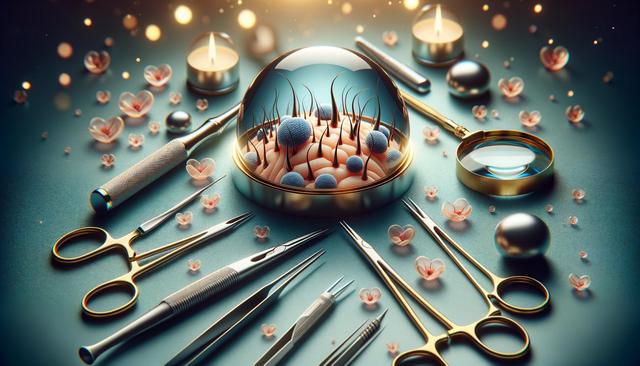Understanding the Hair Transplant Process
Hair transplantation is a minimally invasive medical procedure that addresses hair loss by removing healthy hair follicles from one part of the body—usually the back or sides of the scalp—and implanting them into areas with thinning or no hair. This process is highly technical and requires a skilled medical team, ensuring the outcome looks natural and blends seamlessly with the existing hair. The two most commonly used techniques are Follicular Unit Extraction (FUE) and Follicular Unit Transplantation (FUT). Each method has its own advantages and is selected based on an individual’s hair loss pattern, donor hair availability, and personal goals.
One of the key benefits of a hair transplant is that it uses your own hair, which continues to grow naturally after the procedure. This helps maintain consistency in hair texture and appearance. The surgery typically involves multiple steps, including consultation, donor area preparation, graft extraction, and implantation. Although recovery times can vary, most patients resume normal activities within a few days, with new hair growth beginning to appear in a few months.
Who is a Suitable Candidate for Hair Transplant?
Not everyone experiencing hair loss is an ideal candidate for a hair transplant. Suitability depends on several factors, including the cause of hair loss, the availability of donor hair, and the patient’s general health. Typically, people with pattern baldness—caused by genetic factors—see the most consistent results. Other considerations include:
- Age: Candidates are usually over 25, as the pattern of hair loss is more predictable.
- Type of Hair Loss: Ideal for individuals with permanent hair loss rather than temporary shedding.
- Donor Hair Density: Sufficient, healthy follicles are needed for optimal results.
- Scalp Condition: A healthy scalp improves the chances of successful implantation and regrowth.
A professional consultation with a qualified specialist is essential to determine whether a hair transplant is appropriate. During this consultation, the doctor will assess your hair and scalp and discuss realistic expectations for the outcome.
Achieving Natural-Looking Results
One of the most valued aspects of modern hair transplant procedures is their ability to produce natural-looking results. This is achieved through meticulous planning and execution by experienced professionals. Factors that contribute to a natural appearance include hairline design, angle and direction of graft placement, and matching the texture and density of surrounding hair. A well-executed transplant should be virtually undetectable to others.
The artistry involved in designing the new hairline plays a significant role. Specialists often consider facial symmetry, age, and future hair loss progression when planning the hairline. Additionally, using smaller grafts and placing them strategically enhances the realism of the final look. Some clinics also incorporate advanced imaging tools during planning to simulate outcomes and help patients visualize their results beforehand.
Recovery and Aftercare
Post-procedure care is essential for successful healing and optimal hair growth. While the procedure itself is low-risk, following aftercare instructions closely can help avoid complications and improve the outcome. Immediately after surgery, patients may experience mild swelling, redness, or discomfort in the treated areas, which typically resolve within a few days.
- Avoid strenuous activity for at least a week.
- Sleep with your head elevated to reduce swelling.
- Refrain from washing your hair for the first few days, as advised by your provider.
- Follow medication guidelines for pain management or antibiotics if prescribed.
New hair usually begins to grow within three to four months after the procedure. Full results often become visible between 9 to 12 months. During this period, it’s important to maintain regular follow-ups with your specialist to monitor progress and address any concerns.
Cost Considerations and Long-Term Value
Hair transplants are considered a long-term investment in appearance and self-confidence. The cost of the procedure can vary significantly depending on the extent of hair loss, the number of grafts required, the technique used, and the clinic’s location. While the initial cost may seem high, many individuals find the value exceeds that of temporary or ongoing hair restoration treatments such as topical solutions or wigs.
In most cases, a single hair transplant session can achieve the desired result. However, some individuals may require multiple sessions for extensive hair loss or to refine their hairline over time. When calculating the cost, it’s also important to factor in the permanent nature of the results. Since transplanted hair is resistant to the hormone responsible for pattern baldness, the newly grown hair tends to last a lifetime with proper care.
Some clinics offer financing options or payment plans to make the procedure more accessible. It’s advisable to choose a provider based on their experience and success rates rather than cost alone, as the quality of the outcome depends heavily on the expertise of the surgical team.
Conclusion: Restoring Confidence Through a Thoughtful Approach
For individuals dealing with hair loss, a well-planned hair transplant offers a reliable and long-lasting solution that not only restores hair but also enhances self-esteem. By carefully selecting a qualified provider and following a personalized treatment plan, patients can achieve natural-looking and satisfying results. From understanding the procedure to maintaining proper aftercare, each step plays a crucial role in the success of the transplant. If you’re considering this option, thorough research and a professional consultation are the best first steps toward a confident and revitalized appearance.



Leave a Reply